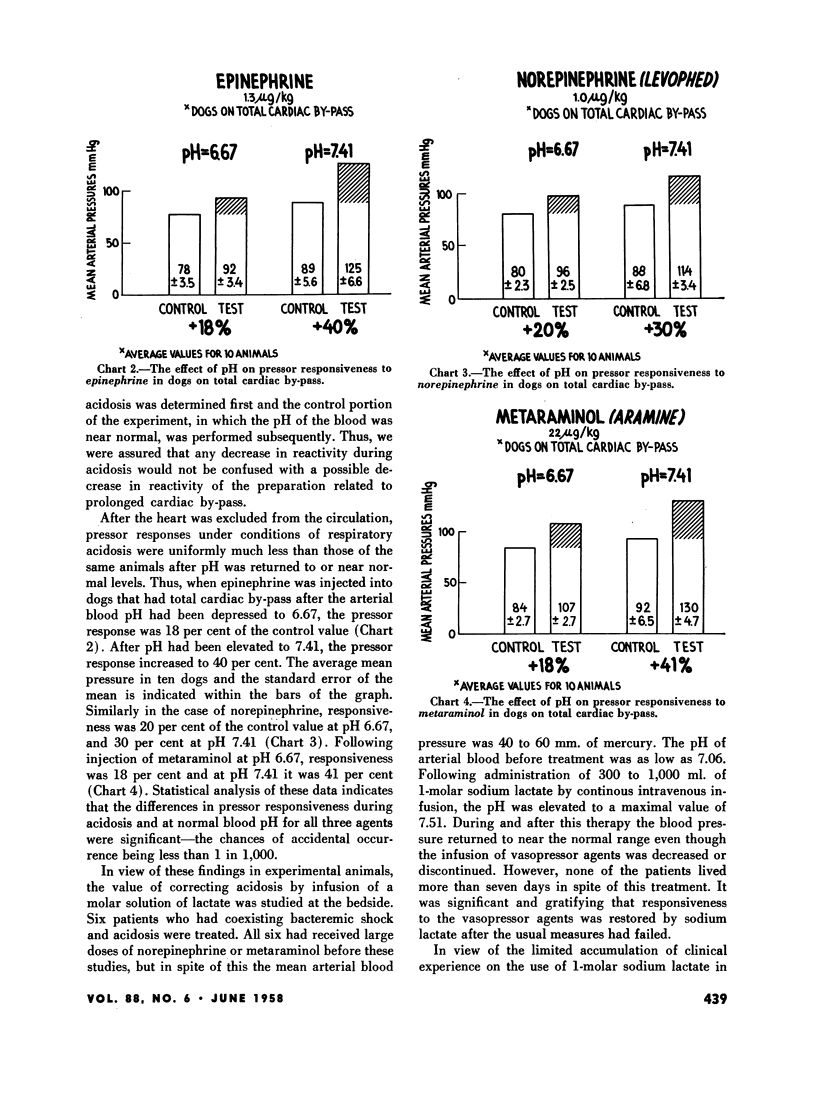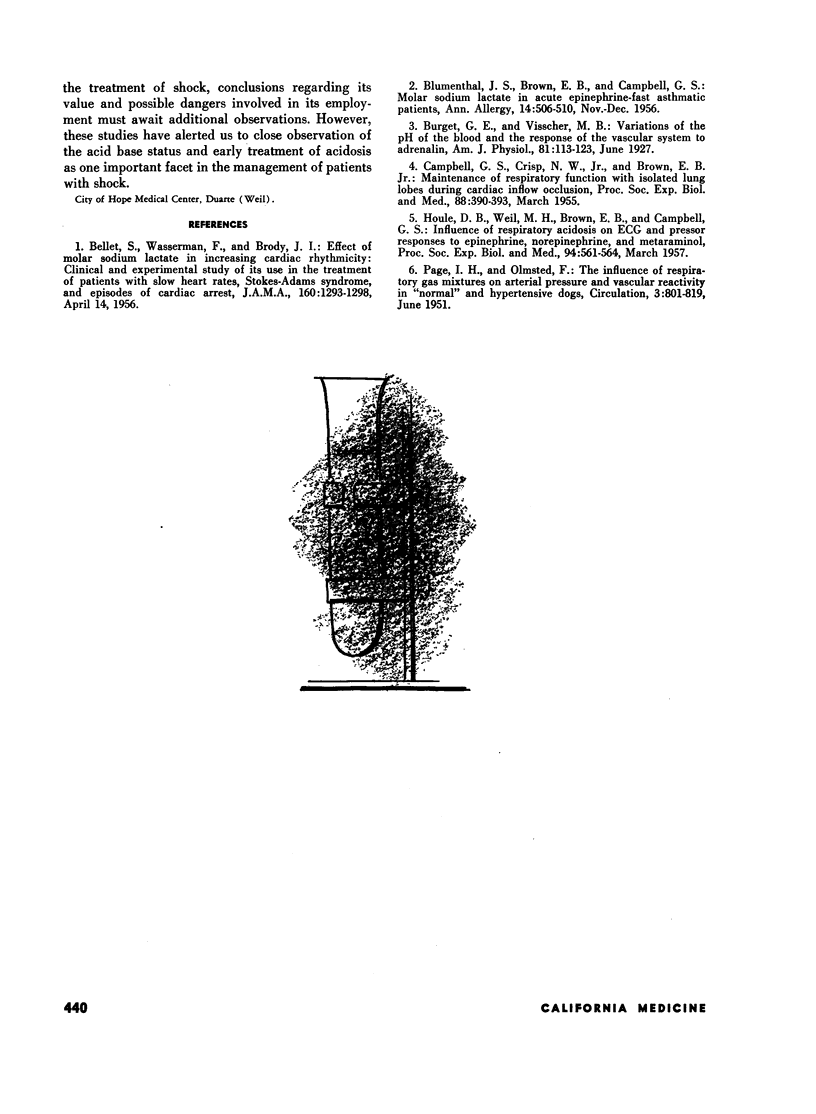Abstract
Clinical observations have indicated that patients who are in shock and who have coexisting acidosis respond relatively poorly to sympathomimetic amines. In experiments with dogs, it was found that, in the presence of acidosis, the pressor action of epinephrine, norepinephrine and metaraminol was considerably reduced. The effect on cardiac rhythm was also considerably lessened after the pH value of the blood had been lowered.
In view of these observations in animals, six human patients with profound shock and acidosis were studied. All had a considerably lessened pressor response to vasopressor agents; then, after elevation of the blood pH by intravenous infusion of a 1-molar solution of sodium lactate, responsiveness was restored.
These observations emphasize the desirability of close observation of the acid-base status, and early treatment of acidosis, as an important aspect in the management of patients with shock.
Full text
PDF



Selected References
These references are in PubMed. This may not be the complete list of references from this article.
- BELLET S., WASSERMAN F., BRODY J. I. Effect of molar sodium lactate in increasing cardiac rhythmicity; clinical and experimental study of its use in the treatment of patients with slow heart rates, Stokes-Adams syndrome, and episodes of cardiac arrest. J Am Med Assoc. 1956 Apr 14;160(15):1293–1298. doi: 10.1001/jama.1956.02960500023007. [DOI] [PubMed] [Google Scholar]
- BLUMENTHAL J. S., BROWN E. B., CAMPBELL G. S. Molar sodium lactate in acute epinephrine-fast asthmatic patients. Ann Allergy. 1956 Nov-Dec;14(6):506–510. [PubMed] [Google Scholar]
- CAMPBELL G. S., CRISP N. W., Jr, BROWN E. B., Jr Maintenance of respiratory function with isolated lung lobes during cardiac inflow occlusion. Proc Soc Exp Biol Med. 1955 Mar;88(3):390–393. doi: 10.3181/00379727-88-21597. [DOI] [PubMed] [Google Scholar]
- HOULE D. B., WEIL M. H., BROWN E. B., Jr, CAMPBELL G. S. Influence of respiratory acidosis on ECG and pressor responses to epinephrine, norepinephrine and metaraminol. Proc Soc Exp Biol Med. 1957 Mar;94(3):561–564. doi: 10.3181/00379727-94-23012. [DOI] [PubMed] [Google Scholar]
- PAGE I. H., OLMSTED F. The influence of respiratory gas mixtures on arterial pressure and vascular reactivity in normal and hypertensive dogs. Circulation. 1951 Jun;3(6):801–819. doi: 10.1161/01.cir.3.6.801. [DOI] [PubMed] [Google Scholar]


